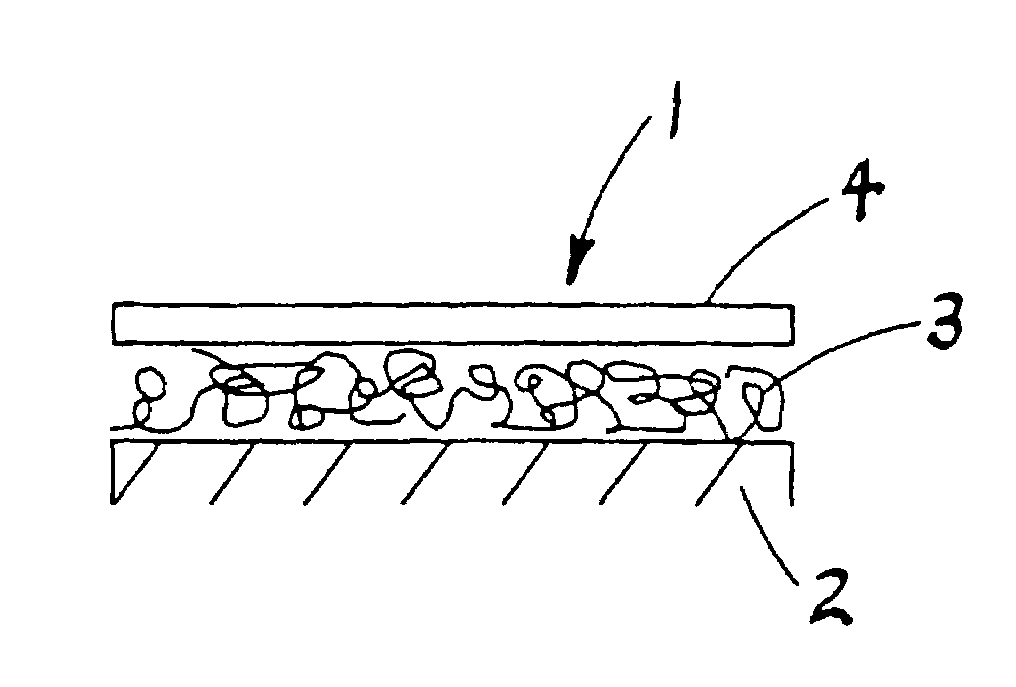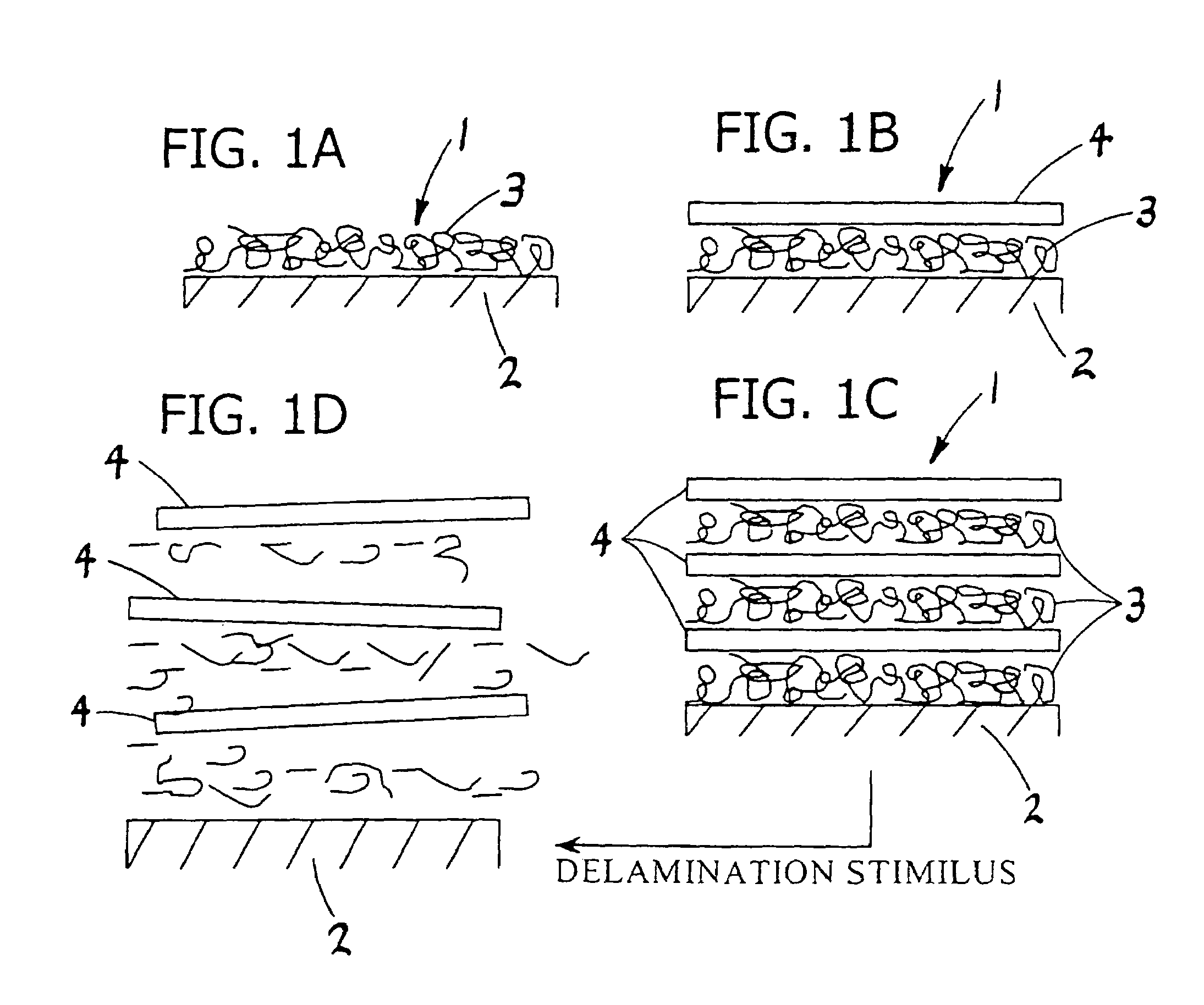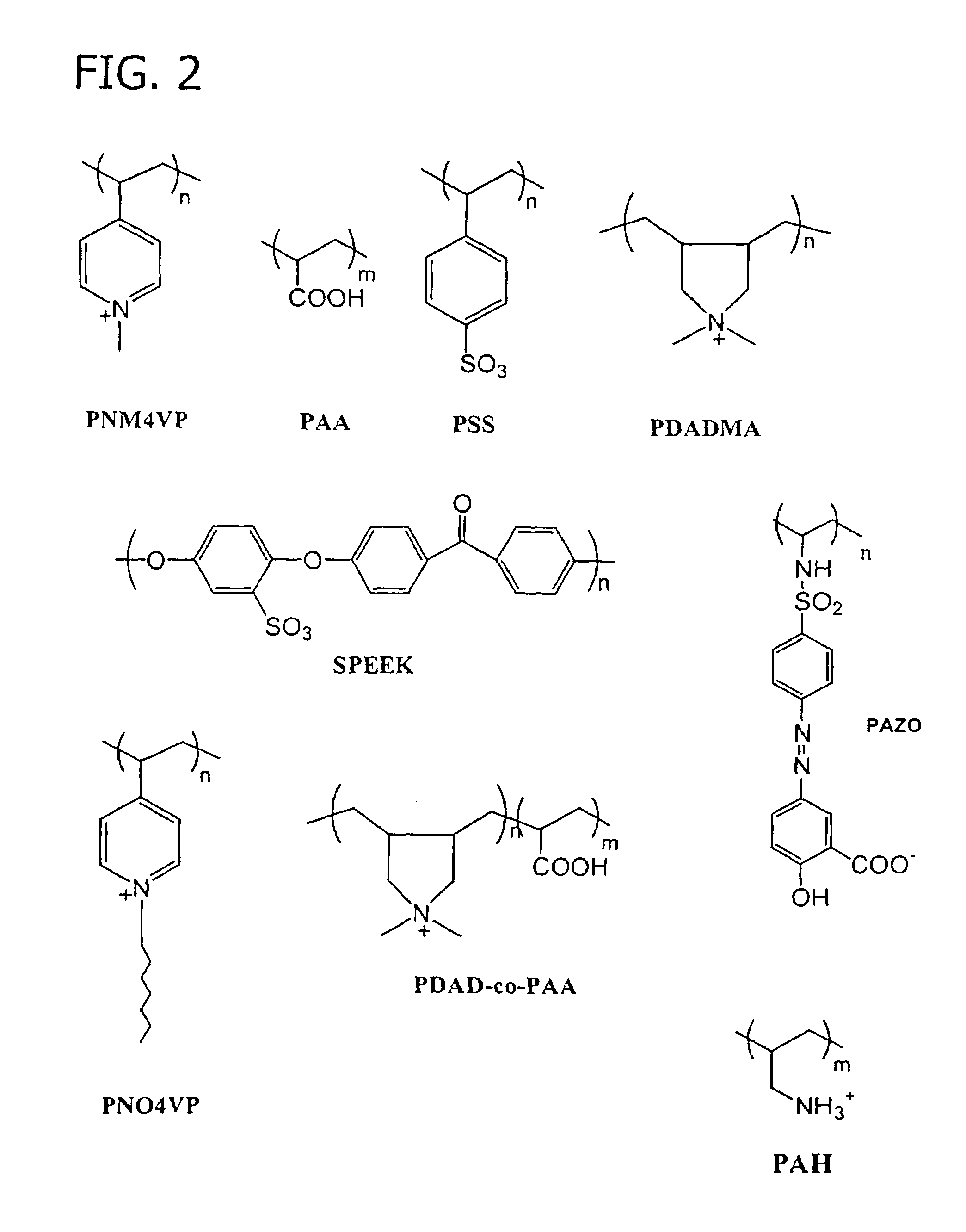Method of preparing free polyelectrolyte membranes
a polyelectrolyte membrane and free technology, applied in the field of preparing free polyelectrolyte membranes, can solve the problems of requiring the disposal of organic solvents, imposing certain limitations on their use, and slow process
- Summary
- Abstract
- Description
- Claims
- Application Information
AI Technical Summary
Problems solved by technology
Method used
Image
Examples
example 1
[0068]This example describes the use of an increase in salt concentration as the dissociation stimulus. It is presently believed that increasing the salt concentration decomposes a release stratum by: 1) swelling the stratum with the salt ions and accompanying water; and 2) disrupting the attractive forces between the charged polyelectrolyte layers because the polyelectrolyte layers become attracted to oppositely-charged salt ions rather than the oppositely-charged polyelectrolyte of the surrounding layers. See Dubas and Schlenoff, Langmuir 17, 7725 (2001).
[0069]A multilayer comprising 20 alternating layers of PAA and PDAD (i.e., the release stratum) was deposited on top of and in contact with a silicon wafer substrate with a surface area about 600 cm2. A second multilayer comprising 20 alternating layers of PSS and PDAD (i.e., the membrane stratum) was deposited on top of and in contact with the release stratum. The thickness of the PAA / PDAD multilayers increases with increasing sa...
example 2
[0070]A change in the pH can also be used to delaminate the release stratum. For example, the complete removal of a weak polyacid-containing multilayer from a substrate at a low pH by neutralizing the negatively-charged polyelectrolyte to eliminate the electrostatic interaction of the polyelectrolytes has been reported. See Mendelsohn et al., Langmuir 16, 5017 (2000). Additionally; it has been reported that a pH change can destabilize a multilayer created with hydrogen-bonded polymer complexes. See Sukishvili and Granick, J. Am. Chem. Soc. 122, 9550 (2000).
[0071]Specifically, this example describes the use of a pH increase as the dissociation stimulus. Using a 1 M NaCl-HCl solution having a pH of about 2, a multilayer comprising 10 alternating layers of random copolymer of PAA (20%) and PDAD (80%), bearing a net positive change (PDAD-co-PM) and PSS as its negative partner was deposited on a silicon wafer substrate with a surface area of about 600 cm2 as the release stratum. At a low...
example 3
[0074]The ion transport properties of free membranes and as-deposited membrane strata were compared by measuring the flux of electrochemically active probe ions through them. FIG. 4 compares the current density passing through a 20-layer PSS / PDAD film grown directly on a platinum electrode with the current passing through a 20 layer PSS / PDAD film deposited on a 20 layer PSS / PDAD-co-PM release stratum which was delaminated by immersion in pH 11, 1M NaCl solution and then placed on a platinum electrode. The films had the same nominal thickness (about 200 nm). The open circles represent the 10 layer-pair free membrane of PSS / PDADMA fabricated as in FIG. 1 and tested in FIG. 3. The filled circles represent 10 layer pairs of PSS / PDADMA deposited directly on the electrode surface from 1 M NaCl-polyelectrolyte solutions. Both samples showed the strong nonlinear dependence of ion flux on salt concentration peculiar to these intrinsically compensated systems. For comparison, FIG. 4 also cont...
PUM
| Property | Measurement | Unit |
|---|---|---|
| thicknesses | aaaaa | aaaaa |
| pH | aaaaa | aaaaa |
| diameter | aaaaa | aaaaa |
Abstract
Description
Claims
Application Information
 Login to View More
Login to View More - R&D
- Intellectual Property
- Life Sciences
- Materials
- Tech Scout
- Unparalleled Data Quality
- Higher Quality Content
- 60% Fewer Hallucinations
Browse by: Latest US Patents, China's latest patents, Technical Efficacy Thesaurus, Application Domain, Technology Topic, Popular Technical Reports.
© 2025 PatSnap. All rights reserved.Legal|Privacy policy|Modern Slavery Act Transparency Statement|Sitemap|About US| Contact US: help@patsnap.com



